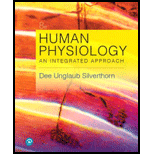
(a)
To define: The terms glucose, glycogenolysis, glycogenesis, gluconeogenesis, glucagon, and glycolysis and the relation between them.
Introduction:
Anabolic pathway is associated with the synthesis of large molecules and catabolic pathway is associated with the breakdown of large molecules.
(b)
To determine: The terms shivering thermogenesis, non-shivering thermogenesis, and diet-induced thermogenesis and the relation between them.
Introduction: Homeostasis is the mechanism of the body by which it maintains a constant temperature throughout the body.
(c)
To determine: The terms lipoproteins, chylomicrons, cholesterol, HDL-C, LDL-C, and apoproteins and the relation between them.
Introduction: Proteins are the large, complex
(d)
To determine: The terms direct and indirect calorimetry and the relation between them.
Introduction: Metabolic rate defines the rate of metabolism. It the amount of energy used by a living organism per unit of time.
(e)
To determine: The terms conductive heat loss, radiant heat loss, convective heat loss, and evaporative heat loss and the relation between them.
Introduction: Heat loss from the body takes place by radiation, conduction, convection, and evaporation.
(f)
To determine: The terms absorptive and postabsorptive states and the relation between them.
Introduction: Metabolism is defined as the all chemical reactions that takes place in the body. The metabolic pathway that synthesizes large molecules from smaller ones is known as an anabolic pathway. The pathway that breaks a large molecule into smaller one is called catabolic pathway.
Want to see the full answer?
Check out a sample textbook solution
Chapter 22 Solutions
Human Physiology: An Integrated Approach Plus Mastering A&P with Pearson eText -- Access Card Package (8th Edition) (What's New in Human Physiology)
- What is the opening indicated by the pointer? (leaf x.s.) stomate guard cell lenticel intercellular space none of thesearrow_forwardIdentify the indicated tissue? (stem x.s.) parenchyma collenchyma sclerenchyma ○ xylem ○ phloem none of thesearrow_forwardWhere did this structure originate from? (Salix branch root) epidermis cortex endodermis pericycle vascular cylinderarrow_forward
- Identify the indicated tissue. (Tilia stem x.s.) parenchyma collenchyma sclerenchyma xylem phloem none of thesearrow_forwardIdentify the indicated structure. (Cucurbita stem l.s.) pit lenticel stomate tendril none of thesearrow_forwardIdentify the specific cell? (Zebrina leaf peel) vessel element sieve element companion cell tracheid guard cell subsidiary cell none of thesearrow_forward
- What type of cells flank the opening on either side? (leaf x.s.) vessel elements sieve elements companion cells tracheids guard cells none of thesearrow_forwardWhat specific cell is indicated. (Cucurbita stem I.s.) vessel element sieve element O companion cell tracheid guard cell none of thesearrow_forwardWhat specific cell is indicated? (Aristolochia stem x.s.) vessel element sieve element ○ companion cell O O O O O tracheid O guard cell none of thesearrow_forward
- Identify the tissue. parenchyma collenchyma sclerenchyma ○ xylem O phloem O none of thesearrow_forwardPlease answer q3arrow_forwardRespond to the following in a minimum of 175 words: How might CRISPR-Cas 9 be used in research or, eventually, therapeutically in patients? What are some potential ethical issues associated with using this technology? Do the advantages of using this technology outweigh the disadvantages (or vice versa)? Explain your position.arrow_forward
 Human Physiology: From Cells to Systems (MindTap ...BiologyISBN:9781285866932Author:Lauralee SherwoodPublisher:Cengage Learning
Human Physiology: From Cells to Systems (MindTap ...BiologyISBN:9781285866932Author:Lauralee SherwoodPublisher:Cengage Learning- Health Safety And Nutrition F/Young ChildHealth & NutritionISBN:9781305144767Author:MAROTZPublisher:Cengage





